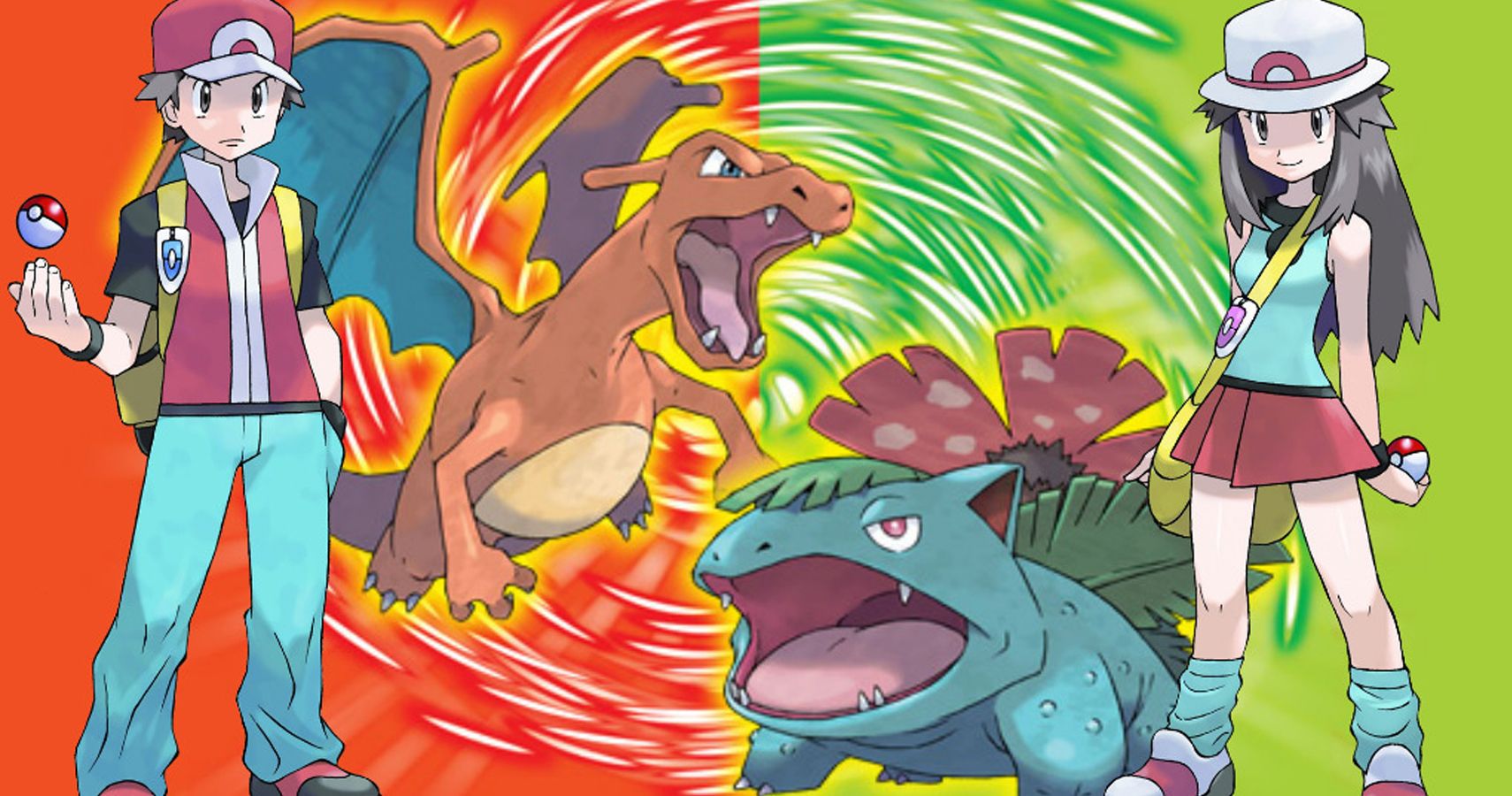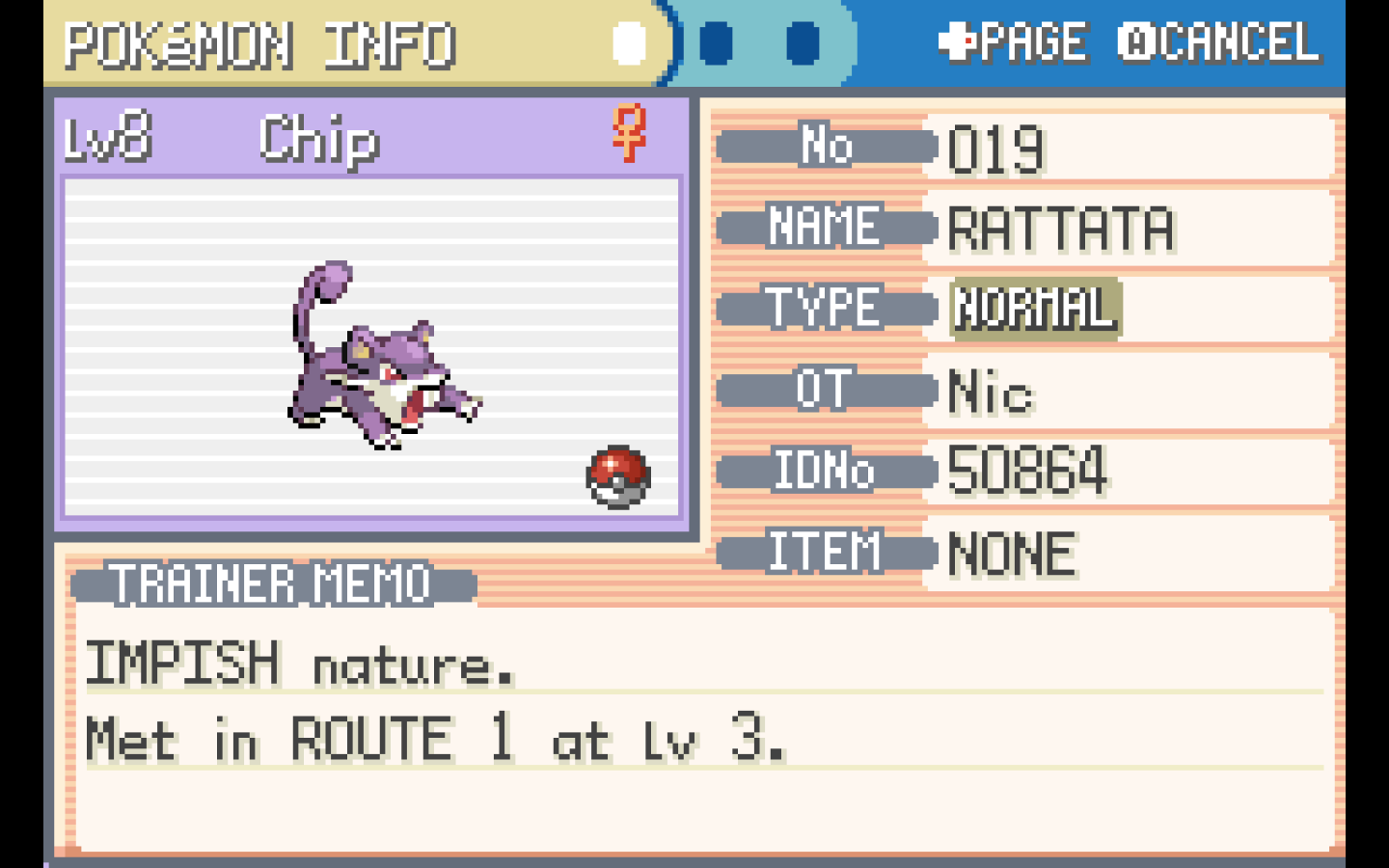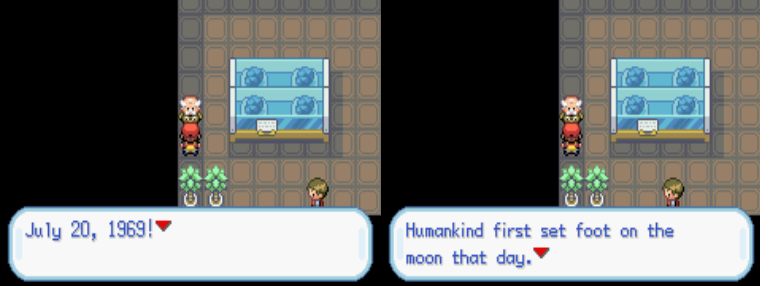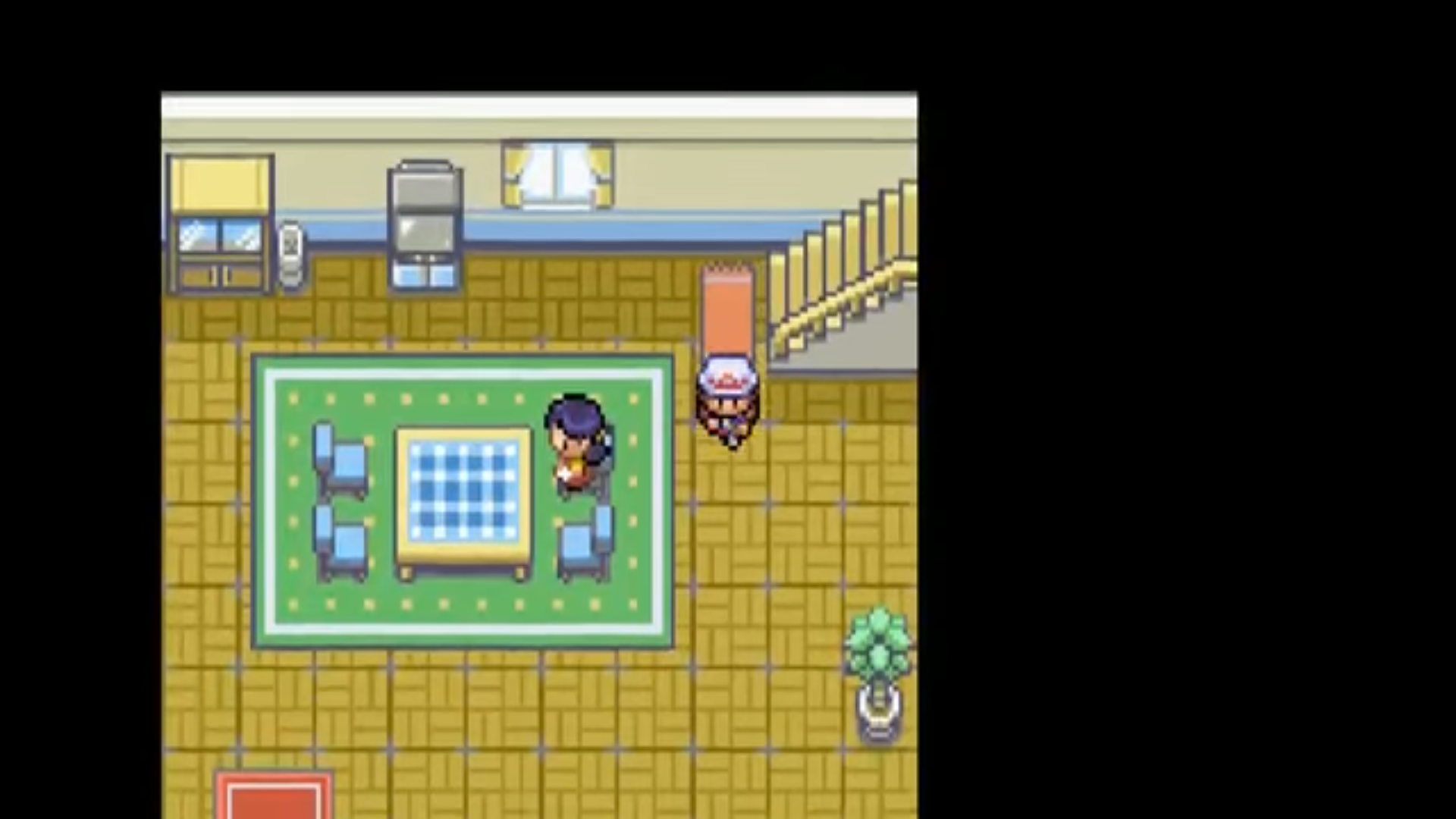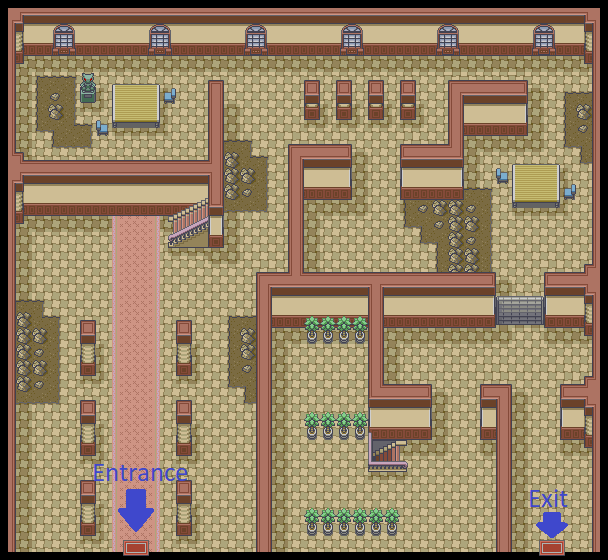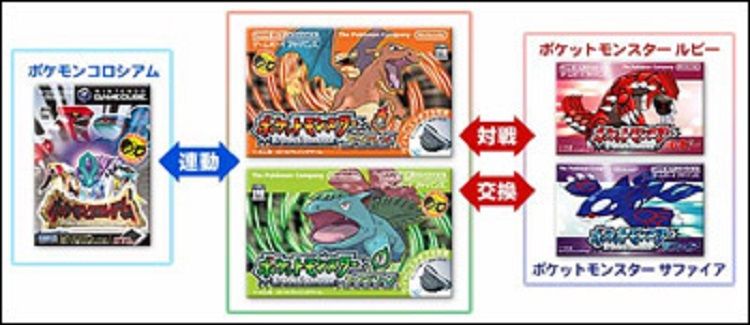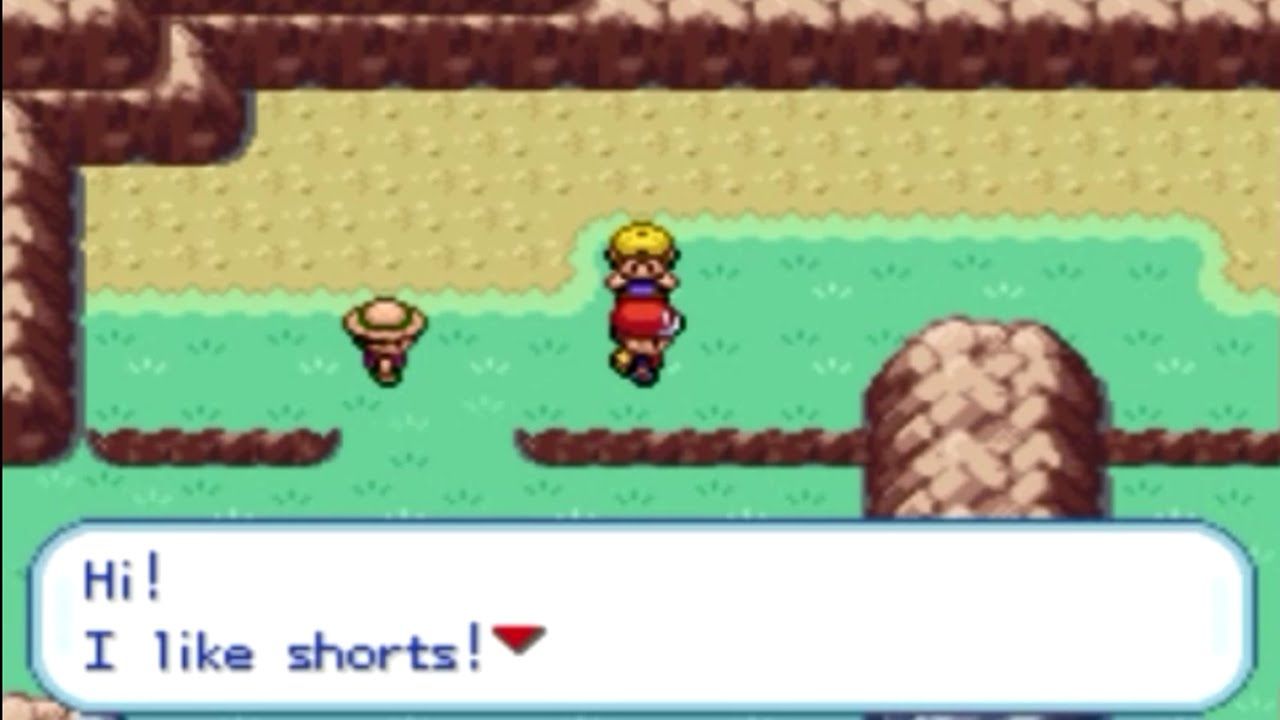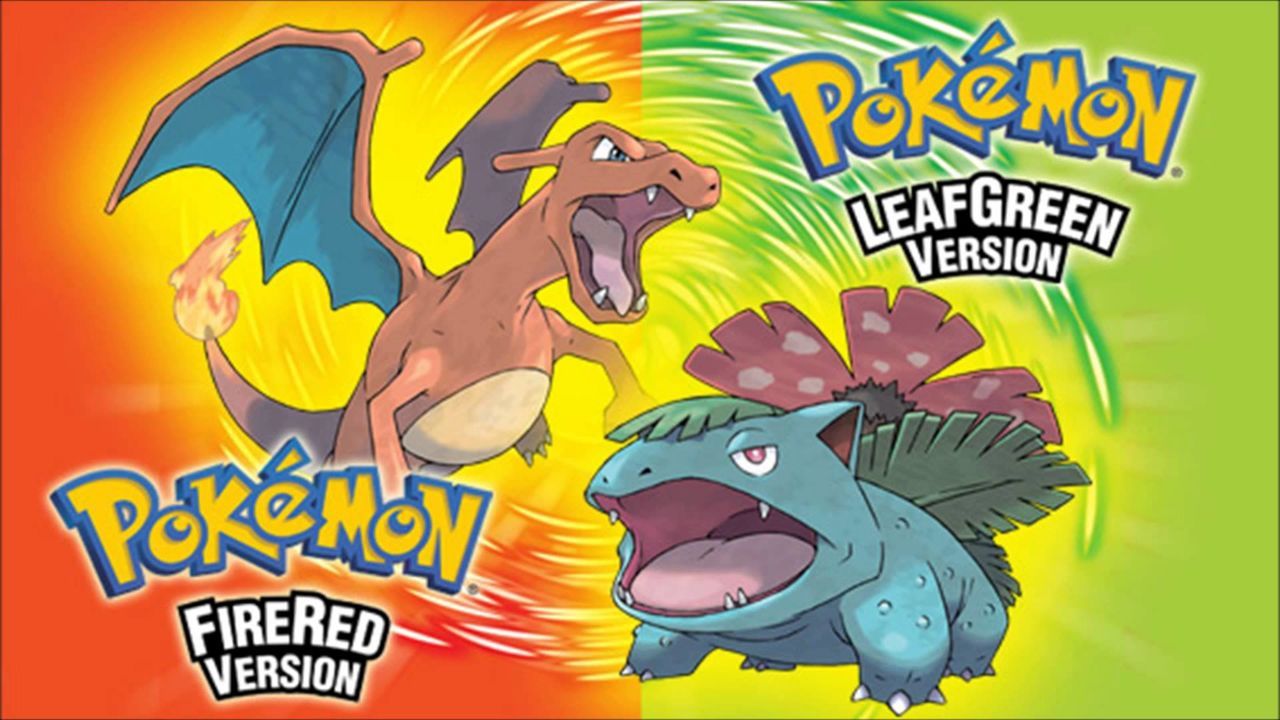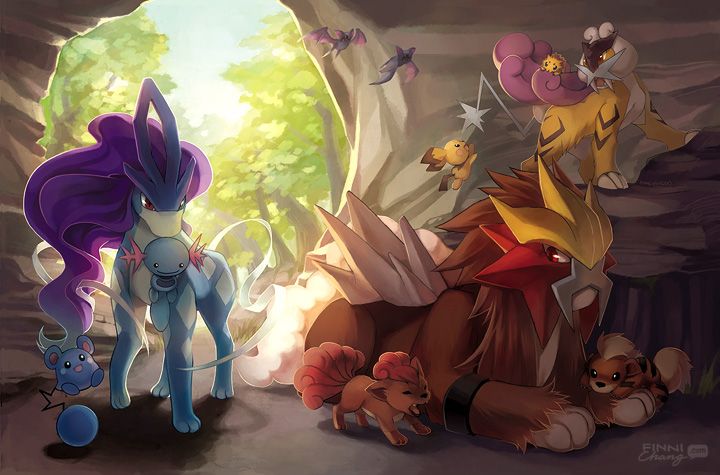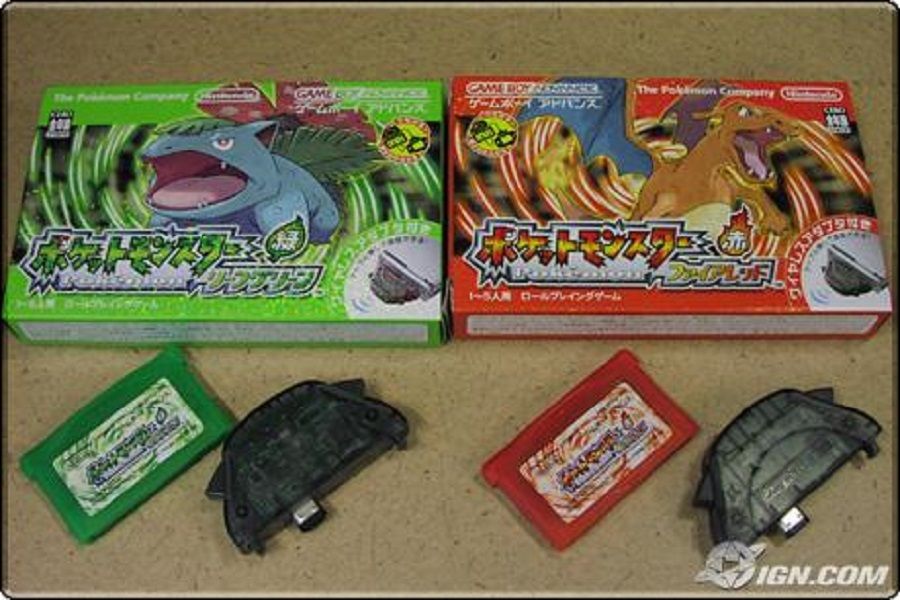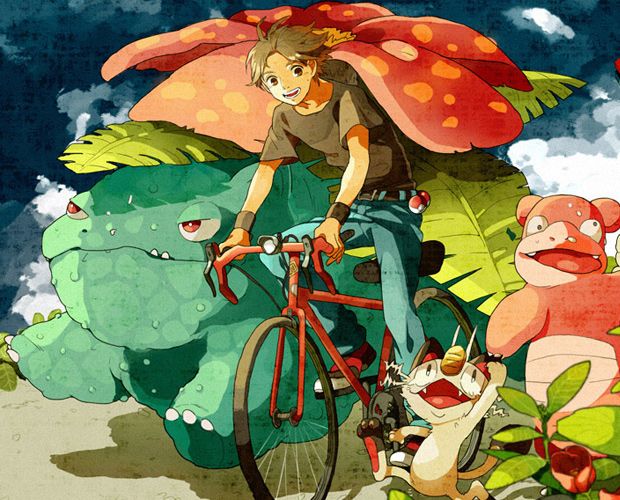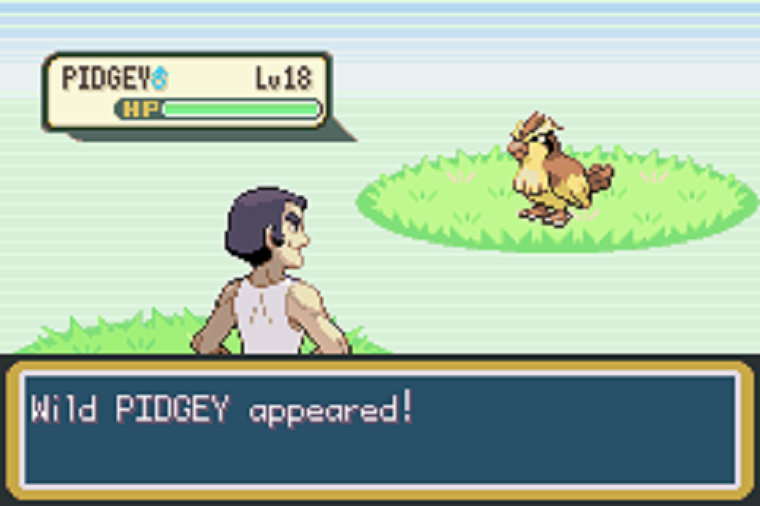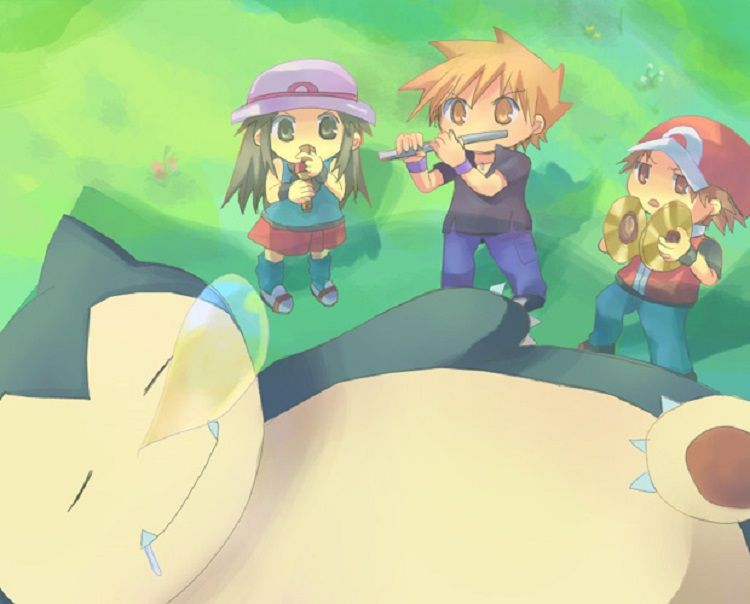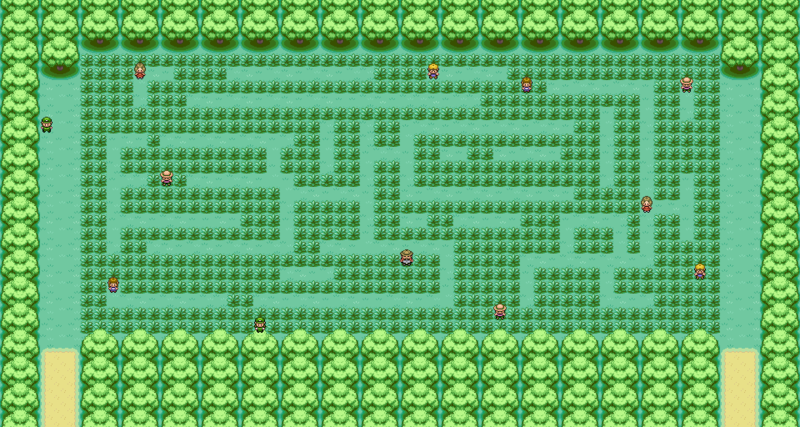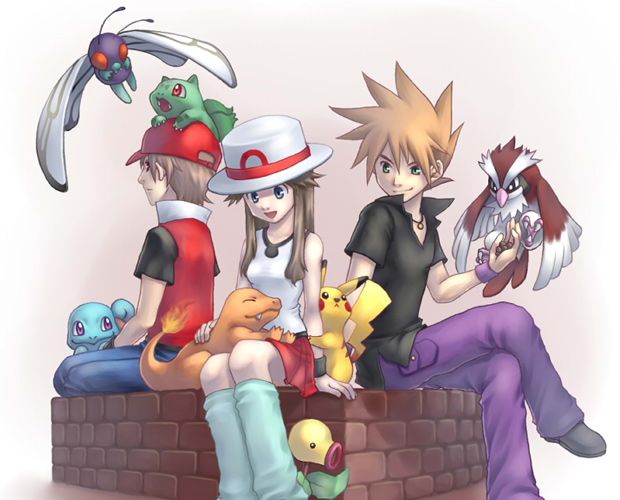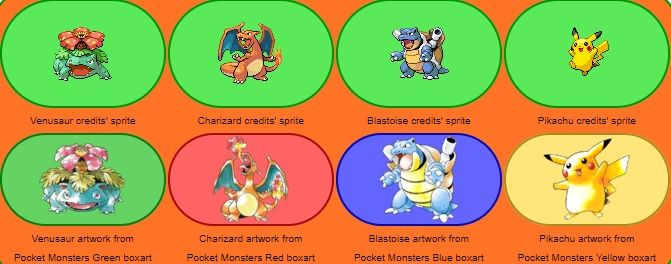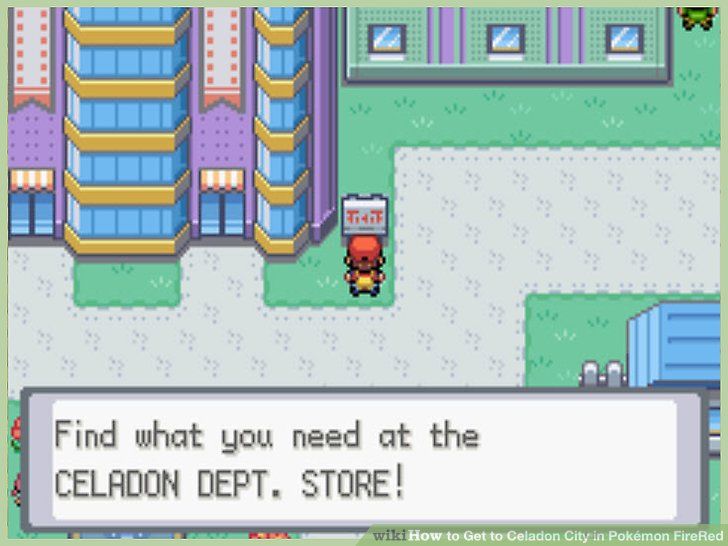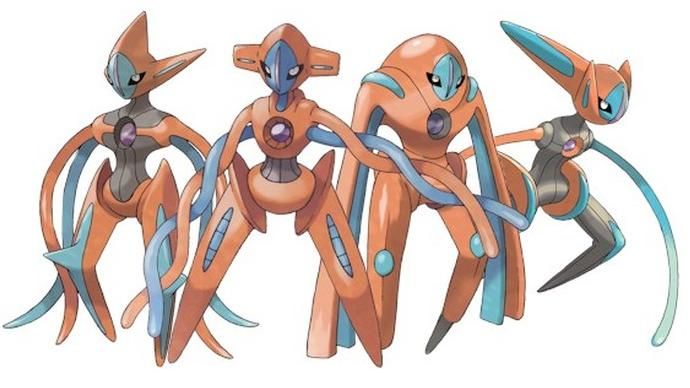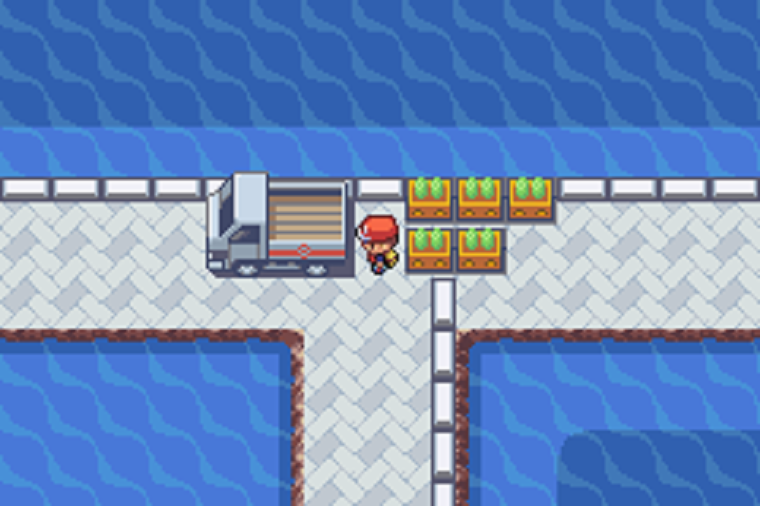The first generation of Pokémon games were released over twenty years ago, and are still remembered fondly by many fans as a gateway into the wonderful world of Pokémon. Though the games have well gone past the initial entries’ limitations and expectations, they will always be a milestone effort in the eyes of many. The influence and popularity of the Gen I games can probably best be described by referencing their Gen III remakes. Despite only being around eight years old at the time, the games received updated remakes allowing players to experience the franchise's origins with the current technology – and they were great.
FireRed & LeafGreen were some of the best selling and well-received games in the franchise at the time of their release. Though they weren’t as popular as Ruby & Sapphire the games introduced a younger generation to Gen I and put the original 151 back on the map. Despite being remakes, the games have their own unique and interesting history and are chalk full of interesting gameplay aspects, rumors, and various other trivia. Though they might’ve not had the same impact on the franchise as their predecessors did, FireRed & LeafGreen offered up a polished – and in many ways better – way to experience Gen I for all fans.
With that being said, here are 25 facts you didn't know about Pokémon FireRed & LeafGreen
25 Pokédex Error
The Pokémon games have had a history of being a little technologically limited, especially in the earlier installations. These aren’t really major restrictions that we’re talking about here, but were always somewhat noticeable to the astute fan. Things have changed significantly from the first generation of Pokémon, where these things were much more noticeable – but there are still some things that fly under the radar. As it stands, the games are far more polished now than they used to be but there were still problems going as far back as Gen III. While it isn’t all that noticeable, there’s a slight error that occurs with the Pokédex when displaying a Pokémon’s category. The Dex will only show the first word of any given Pokémon’s category. So for example, it’d only show Imitation for Sudowoodo – where as any other entry will have it as the Imitation Pokémon. It might not seem like that big of a deal – and it isn’t – but man, it must’ve been weird for players to see such a minimalist dex entry. We can’t really imagine why this problem occurred, as the original games had issues with space but still didn’t run into the same problems.
24 Art Imitating Life
It’s a pretty widely accepted fact that the Pokémon universe is one that is set in an alternate world from ours – with many similarities between the two and even more differences. Of course, the most immediately recognizable difference is the presence of magical, battling animal companions roaming the world. But the games make some allusions to the real world every so often. Some are more subtle than others. If you find yourself in Pewter City then you may very well be in for a bit of a history lesson. In the Pewter City Museum, you can find an NPC around the special space exhibit on the first floor. If you talk to this NPC, they’ll talk about July 20th, 1969 being the day mankind first stepped on the moon. Of course, this is the actual date of the moon landing – making this a fun little historical reference. You can find plenty of things in the games that mirror our world, and it’s not all just historical bits either. The most noticeable things we have in common with the Pokémon world are found in everyday life; things like cars, mobile phones and ships are all a huge part of the Pokémon world as well.
23 What’s on the TV?
There are plenty of smaller interactions and easter eggs thrown into Pokémon games that you might not catch on to due to how obscure they are. While the games tend to follow a tired and true formula, it’s the little things that change that sometimes catch out attention. There are typically a good amount of real life references to be found as you start your journey, and one of the easiest to spot is on your TV, where a film is playing. Many veteran players might skip this early game stuff, but there’s plenty of interesting things to be found, especially in the players home.
The film changes depending on the gender of the protagonist.
If you’re playing as the male protagonist then you’ll read about a movie about four boys walking down railroad tracks which is a reference to Stand by Me. In the case of the female protagonist, the film is about a girl walking down a yellow brick road – which is a reference to The Wizard of Oz. These are two pretty famous films, but they might’ve gone over the heads of some of the younger players at the time – and because of that, it might’ve taken some players a while to notice these references.
22 Cool Room, Bro
It’s the starting point of nearly every game in the Pokémon franchise, yet it’s probably the least used and visited location as well. It makes sense, seeing as the games consist of going out into the world and exploring throughout your adventure. All in all, the player’s bedroom is a pretty boring place that isn’t all that noteworthy. There’s been a tradition of having a Nintendo game console in the room that changes in each generation. While FireRed & LeafGreen do technically belong to Gen III, the console isn’t the same as it is in Ruby & Sapphire. Being remakes, they mirror the originals in a way. But while in the Japanese version of the games the player has a Famicom, the North American version has a front-loader NES. It’s a pretty small difference, sure but is yet another example of small localization differences in the Pokémon games. Regarding the consoles, there’s nothing all that special about them in game. Just another case of Nintendo product placement in one of their biggest and most successful franchises. But it is very cool for Game Freak to have gone the retro route instead of plugging in the Game Cube like they did with Ruby & Sapphire.
21 Two In One
While it doesn’t happen all that often, there are still some pretty weird glitches found throughout the Pokémon games. As you’d expect, these have become less and less common as the games have progressed. But if you look hard enough, you can still find some pretty obscure ones hidden away – sometimes in plain sight as is the case with our next entry. It might’ve flown over many gamers’ heads at the time, but there’s something funny with Pokémon Mansion on Cinnabar Island. The abandoned residence and former laboratory is one creepy and eerie place to be. Perhaps the people in charge of programming the game were a little too fastidious and ended up overlooking this one crucial detail. See, if you go into the mansion you’ll notice that there’s only one way in: the entrance. However, if you look at the layout of the building it actually has two exits – both leading out the exact same way. The initial entrance can serve as an exit from the inside sure, but the second one is on the complete other side of the building. It makes you think that they planned on having two entry and exit points in the map but in the end, scrapped the idea and weren’t all that sure of what to do with the second door they made.
20 Fair Trade
Gen III is when the technology being put into making the Pokémon games really started to grow and get more and more ambitious in regards to the features being added and how they’d tie into the gameplay experience. Gen III was also the first generation that saw two separate mainline entries to the series, with Ruby & Sapphire being the ones to usher in the generation, and FireRed & LeafGreen the ambitious remakes. Not to mention Pokémon Coliseum in the GameCube. What this did – other than offer players a bevy of choices – was create a lot of opportunities to trade between these games and acquire a wide variety of different Pokémon. At this point, there were already quite a lot of different Pokémon out there, making the initially gargantuan task of catching them all that much more difficult. But things were made easier with Nintendo giving players the ability to trade in between games. That meant that you could own a copy of LeafGreen and trade for Pokémon with a friend in other Gen III titles like Ruby and Coliseum. It really makes getting a wide variety of different Pokémon easier.
19 Wasted Assets
The weather was first introduced to the Pokémon games in Gen II and was a great way of further immersing gamers into the Pokémon world while adding a new and challenging gameplay mechanic to strategize with and play around. As you’d expect, this mechanic was expanded upon in future generations and has remained a quiet staple of the series as the years have gone by. Gen III contained a number of various weather effects, each being activated by different abilities and environmental battles. There were a ton of them and we wouldn’t blame you if you didn’t quite remember them all. Seeing as it’s a Gen III game, FR & LG contains all the same data for weather effects used in its predecessors. However, many of them aren’t even used in the games and are simply somewhere in the code. The cloudy and mist weather effects are the only ones used. So, rain, snow, thunderstorm, sandstorm, volcanic ash, and underwater textures are essentially wasted in the game as they’re lying dormant somewhere in the code, but are never really put to use. We’re not entirely sure why this is the cases, but one interesting thing to note is that the games exclude the snowflake falling overworld effect – which we’ve seen in the beta – the same as Ruby & Sapphire do.
18 “I Like Shorts”
Having been around for over two decades at this point, the Pokémon series has spawned a number of notable moments, quotes and other pop culture notabilities. It seems like every entry brings its own addition to the pop culture landscape and this was especially true in regards to the first games. Being the catalysts for the franchises early success, plenty of things from Gen I stood out and stuck with players – some of these things were actually pretty obscure. It ranged from Pokémon rumors to memorable in-game moments and even obscure bits of dialogue.
What was a seemingly ordinary bit of dialogue took on a life of its own.
In the original games, you come across a Youngster trainer who tells you “Hi! I like shorts! They’re comfy and easy to wear!” It’s kind of a random comment and something that has stuck with many fans of the games, despite just being idle chitchat from an NPC. The dialogue actually makes a little more sense in the Japanese version of the games, as the Youngsters are known as – and this is a rough translation – “shorts rascals” in the east. Well, this line reappears in the Gen III remakes, and is something of a nod to gamers who played the originals.
17 Continuity Error
The Pokémon games are some of the most popular video games out there, and have a loyal and dedicated fan base that rarely miss anything having to do with the franchise. While the people at Nintendo and Game Freak tend to have a pretty good eye for detail, we’ve seen that even the pros can overlook the simplest of things, and there are plenty of fans out there who are obsessed enough to actually scout anything and everything Pokémon related to the point that they’ll pick up on some of these missed details. For our next entry you needn’t look any further than the box art to spot a pretty glaring continuity error – though it’s one most of us have seen dozens of times and likely one that went unnoticed by many fans. On the cover art for FireRed there’s something weird with Charizard. Something that only the most OCD, detail oriented fans would pick up on. The cover image of Charizard differs a little from its original design – and we’re not talking about angles here. The wing shape is actually completely different on the box. It’s a very modest detail we know, but fans actually spotted it out and then took the time to spread the word about it online. That’s one very – if not too – dedicated fan base right there.
16 Don’t Scare The Puppies
They’re arguably the hardest and most elusive Pokémon to catch and they’ve given plenty of gamers fits when it comes to tracking them down. Catching legendaries has always been something of a challenge in Pokémon games, and these three really take the cake for being some of the most difficult to add to your collection. As if it wasn’t hard enough to get your hands on Entei, Raikou, and Suicune – there’s a glitch in FireRed & LeafGreen that makes these legendary hounds unobtainable. The trio becomes available to the player once the main storyline is completed and the National Pokédex is unlocked. The following steps are pretty similar to how you’d go about catching them in Gen II, with a random encounter followed by some very tedious tracking. But a certain combination of moves can make these coveted Pokémon disappear for good. If the player uses Mean Look and one of the trio follows up with a roar then the battle will end – as per usual. However, this combination of moves makes it pretty much impossible to encounter that specific Pokémon again in the current save file. When checking the Pokédex to track the Pokémon down, it won’t be seen on the map and will have disappeared for good.
15 Wireless Support
Trading in Pokémon games is a necessary evil that players must put up with if they want to either complete their Pokédex or just get their hands on some version or trade exclusive Pokémon. You can trade with NPCs, friends and in newer installations, with strangers from all around the world. It’s a huge part of the games that Game Freak has pretty much embedded into the experience, and a huge push towards having trading serve as a key part of the core gameplay experience was made in Gen III when FireRed & LeafGreen introduced the wireless adaptor with the games. Though they came separately with regards to later copies of the games, the initial copies of the games came with a wireless adaptor that completely eliminated the need for game link cables. The adaptors not only allowed players to trade with each other, but battle one another wirelessly and also brought in a number of mini-games that could be played with friends. Funny enough, Ruby & Sapphire weren’t compatible with the adaptor, despite being part of the Gen III landscape – though this can be attributed to timing and release schedules more than anything else. Emerald was compatible due to it being a later release.
14 Pause And Rewind
While Gen III brought on a number of major and important gameplay changes, there were also a number of smaller, somewhat underappreciated features added into the games that really made the experience all the more enjoyable and memorable. One of these is the resume feature that many might have forgotten after all these years, but was a handy and entertaining addition to the games nonetheless. The feature would activate following the player entering the hall of fame. It would then show you the four most important events that transpired prior to your last save. This could be anything from battles, to Pokémon encounters and acquisitions. However, this would only count towards recent events – and the most notable ones at that. So the more a player did in between saves, the more the game would have to choose from in that time. It was a very useful feature for those who had large gaps in between save files and even for players who played often, it served as an interesting way to keep track of their adventure and summarize the most exemplary moments that had recently transpired. Sadly, this feature hasn’t really been a mainstay in the series, and while it might not be everyone’s cup of tea, the choice between having it active or not in any future games would be fantastic.
13 Teachy TV
Yet another feature introduced in the Gen I remakes that have been lost to time, Teachy TV was an interesting and engaging way to show new players the basics. Every Pokémon game has a brief tutorial period and makes sure that every detail of catching, finding and battling with Pokémon is hammered into your head. It’s all very helpful the first time around, but gets really annoying and stale once you’ve got a few games under your belt. The tutorial just becomes a tired repetition of mechanics and strategies that most know by heart. Well, this is where Teachy TV comes in. The item itself is first given to you by the infamous old man in Viridian City – which already adds a nice new spin on things. It initially is used as a device to teach new trainers the basics of catching Pokémon in order to kick-start their journey. As you go on you’ll learn more and more about Pokemon battles from this device. The announcer, Primo (or the Poké Dude as he’s known in Gen III), is actually the grandson of the old man in Viridian – and seems to be continuing his legacy via this handy tool.
12 Remixing The Classics
While the Gen I games might’ve not aged all that well over the years, one thing that has stayed timeless is the music that so many fans remember from their childhood. The music in Red & Blue was iconic and played a huge part in engaging with the games’ young audience, helping the world of Kanto come alive, giving each area and event some sort of unique character. Being remakes, FireRed & LeafGreen had the exact same soundtracks as the originals but with some notable changes that fans might not have noticed initially. The songs themselves were remixed to better take advantage of the Game Boy Advance’s capabilities and there were even some Gen II tunes thrown into flesh out the Sevi Islands. There are some changes that were made to the score when compared to the original games though. For example, the Power Plant background music was changed from the Rocket Hideout theme to the Pokémon Mansion theme. Other examples include the Gym Leader BGM being used for the entirety of the Elite Four, instead of just Lance as was the case in the originals – and a somewhat different version of the Pallet Town BGM being used after becoming Pokémon League Champion instead of the Viridian/Pewter/Saffron City BGM that played in the originals.
11 “Bugs” In The Grass
As much as older fans love the original Pokémon games, they weren’t without their flaws, and as has already been discussed the games had their fair share of rampant glitches. Now, this isn’t necessarily a bad thing when you look back at it, as some of these glitches have become some of the most well-known bits of gamer trivia out there. But the Gen III remakes found an interesting way to pay homage to these memorable bugs. For this entry, we once again revisit the Sevii islands. There’s a very small and obscure area around Six Island that is home to a number of strong trainers. But the thing to notice here is the layout of the area.
If you look at the image closely, the grass actually resembles a circuit board.
This area is known as the Pattern Bush. The patterns running through the grass were actually intentionally drawn so that they’d resemble the circuit board of the original Red and Green games. The area only features bug Pokémon which is a reference to the glitches or “bugs” in the original games. You can catch some pretty interesting Bug-types here, including a Heracross so it’s definitely worth checking out.
10 Pokésclusive
Exclusive Pokémon aren’t a new addition to the games by any stretch of the imagination. They’ve been there since day one, and like it or not, it means that you’re going to be stymied anytime you try to complete your Pokédex rocking a single version of any given generation. But this was amplified for the Gen III remakes in a way that – up to that point – made completing the Pokédex one a pretty challenging task. Given the fact that Gen III took players to both the Kanto and Hoenn regions, players had to think of catching region specific Pokémon which was at times, difficult to say the least.
LeafGreen actually boasts more exclusives with 24 compared to 23 for FireRed.
Despite being Gen III games, only three Gen III Pokémon can be captured in FR & LG. These Pokémon are Azurill, Wynaut, and Deoxys. The rest need to be obtained via trade with another game which makes it a hassle. You might’ve thought that there’d be more to choose from given that the remakes are of the same generation but it seems like Nintendo was really pushing for players to buy as many different copies of both versions as possible.
9 Nostalgia Alert
We’re well past the 20-year mark for the Pokémon franchise, and as a result, there are a ton of nostalgic fans out there trying to reconnect with their childhoods. You can see a noticeable effort on Nintendo’s part to find ways to draw in Gen I & II fans with all kinds of merchandise and attention being put on Pokémon from those generations. But this isn’t as new a tactic as you’d have imagined it is. At the time of the release of the remakes, Gen I itself wasn’t all that old but was quickly becoming an outdated part of what was shaping up to be a long and successful franchise. FireRed & LeafGreen gave the games a – at the time – modern spin while reintroducing the games to some of the younger fans. However, that didn’t stop Game Freak from turning up the dial on the nostalgia every now and then. Ever since the franchises 20th anniversary, Gen I has been paraded around at every opportunity. The end credits of FireRed & LeafGreen have a neat little throwback to the originals, where the original four games’ mascots’ sprites transform to match the poses they took on the Japanese box art of their games.
8 Flying Off The Shelves
We all know that the Pokemon franchise is one of the most popular video game properties out there. Not only that, but with a popular animated series and trading card game, along with other assets, it’s one of the biggest multimedia properties in the world. The franchise hit the ground running and never really looked back from there. So as you could imagine, the games sell pretty well. In fact, the Gen III remakes did particularly well in this regard. Within the first week of their release, the games had moved close to 900,000 copies in Japan and nearly sold out – selling out 95.6% of their stock. That’s crazy.
The games actually sold better in North America then they did in Japan.
If you look at the sales numbers then you’ll see that this trend continued well after the games debuted. They had to have sold well to have gotten a Players Choice release later on. To this day the Gen I remakes are still some of the best selling in the series. Over 3 million units were sold in Japan while North America accounted for roughly 4 million plus and Europe just under 3 million. That’s saying something.
7 Deoxys’ Big Debut
Legendary Pokémon are always a fun and challenging bunch to catch and it really feels rewarding once you’ve managed to get your hands on one – without the use of a Master Ball that is. Gen III had some great Legendary Pokémon, one of the most remarkable being the alien shapeshifter Deoxys. Deoxys was introduced in Ruby & Sapphire and was most notable for its transformation dependant stats and unique design. But there’s something else about this Pokémon that was only introduced in the Gen I remakes; two new forms.
The Attack and Defense Formes appear exclusively in either FireRed or LeafGreen.
Yet another thing that made both FireRed & LeafGreen special is their introduction of Deoxys’ new forms. As you might have guessed, these are version exclusives, so there were some restrictions on how players could have accessed either that weren’t all that easy to bypass – unless you had both copies. Deoxys was incredibly unique in that its Forme varied based on which game version you were using it in. Its Normal Forme was the default in Ruby & Saffire while FireRed had the Attack Forme and LeafGreen had the Defense Forme. Emerald, of course, introduced gamers to the incredibly sleek Speed Forme that even to this day, leaves a strong impression.
6 Hunting For Mew
Despite this list focusing mainly on Gen III games, we’ve covered a number of Gen I topics – including, of course, rumors and glitches. Well, our next entry combines the two and recalls one of the most famous Pokémon myths out there. It all has to do with the desirable and elusive Mew and a widespread rumor regarding this hard to pin down Pokémon’s whereabouts and its puzzling absence from the original games. Well given that we’re talking about remakes of those same games, it’s only natural to fit this bit of gaming lore into our list. Back in the original Red & Blue, there was a rumor that claimed Mew was under a truck around the S.S. Anne’s port. This, of course, wasn’t true as we all know by now. But that didn’t stop dedicated fans, eager to get their hands on what was at the time one of the most coveted Pokémon in the game. Well, this rumor made its way back to Gen III in the form of a hidden easter egg put in by the people at Game Freak. In the aforementioned area, the player can find a truck that serves absolutely no purpose and is almost definitely a reference to the Mew rumor.

